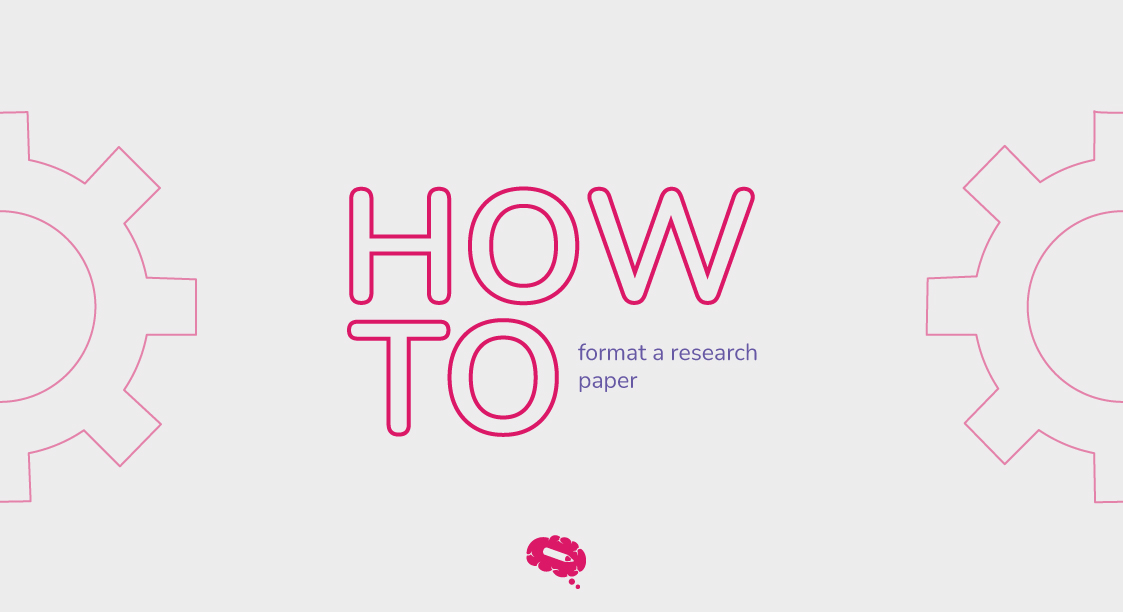Whatever form of research you conduct, if you are writing a paper, an outline will help you organize your thoughts and also serve as a model for the rest of your work.
A research paper’s layout should not take longer than the research itself and should aid in making it visually simpler to read. A research paper outline acts as a visual reminder to include all important parts of your chosen subject. It’s simply a skeleton version of the actual document that you can utilize throughout the writing process.
Understanding the many styles and structures that you may use to outline your research paper will help you learn how to format a research paper properly. This guide will walk you through the steps and help you complete them more quickly.
Research Paper Structure
Before understanding and learning how to format a research paper, it is critical to comprehend the proper structure and how to write it appropriately.
Title
Your research paper, like any other paper you produce, requires a cover page with the title of your study. It also requires the names and institutional affiliations of you and any co-writers.
Introduction
The introduction part informs the reader about the problem that your research is aiming to tackle. You can also discuss the study’s importance and uniqueness here. In the form of a thesis statement, clearly define the research question.
You can learn more about How to write an introduction for a research paper in our recent article.
Background Information
In the background section, you might provide historical facts or clarify previous theories that provide context for your research. It’s also an excellent place to discover your audience and what information they’ll need to understand the rest of your piece.
Literature Review
The literature review part takes research papers or books from the background section and examines them in further depth.
Methods
Understanding your study requires knowing if you utilized qualitative or quantitative methodologies. You can mention all of the methods you used to obtain data, such as experiments, surveys, or research.
Results
What conclusions has your research drawn? In this area, you should present your results and data. Use an objective viewpoint here; leave the evaluation until your closing section, the conclusion.
Conclusion
In conclusion, explain why your findings are noteworthy. This part allows you to assess your outcomes and reflect on your process.
We also have an article in the blog about How to Write a Conclusion for a Research Paper.
Reference Page
The reference list includes information for readers who want to access the sources you cited in your work. Your reference page is located at the bottom of your article.
Make sure to mention all of the used references in the proper citation format; there are many formats presently in use, such as MLA and APA, which, while similar, rely on distinct citation styles that must be followed consistently.
How to format a research paper
General formatting
- If you’re working on a printed research paper, make sure to use clean, good quality 8 1/2′′ x 11′′ white paper, only printed on one side.
- Leave 1-inch margins on the top, bottom, left, and right edges of each page of your essay.
- Page numbers, which are flushed to the right margin, are set 1/2 inch from the top upper-right hand corner; arabic numerals must be used for page numbers and they should not be decorated in any way.
Cover page
- The letters are centered on this double-spaced page.
- Each word’s first letter should be capitalized, except for extremely short phrases such as prepositions or articles.
- Add the name of your institution, college, or high school.
- Enter your research paper title, including a subtitle if applicable, about one-third of the way down the page.
- After skipping a few lines, enter your name, course name and number, instructor name, and paper due date, when applicable.
Abstract
Some formats may not require an abstract; check with your format style to see whether it is required.
- Start a new page.
- The abstract page should include the page header.
- Center and bold the word “Abstract” on the first line of the abstract page (no italics, underlining, or quotation marks).
- Your study subject, research questions, participants, methodology, findings, data analysis, and conclusions should all be included in your abstract.
- Your abstract should be one paragraph long and double-spaced. Typically, your abstract should be no more than 250 words long.
- In some styles, such as AMA, you should also incorporate keywords from your article in your abstract. Start a new paragraph, then type Keywords: (italicized), followed by a list of your keywords.

Spacing
- The entire research should have double spacing between lines.
- One space should be left between words and one space after each comma, semi-colon, or colon.
- A space should never be placed in front of a punctuation mark.
Citation
A quote’s specific format is determined by its length and the research style applied. It is vital to avoid plagiarism by quoting and referencing sources correctly.
If you want to learn how to avoid Plagiarism in your research, there’s an article that explains everything you should know.
Styles of research papers
Here are some instances and distinctions between some research paper styles. Other styles that may be used include Turabian, AIP, ACS, CSE, and many others.
| Topics | AMA | APA | Chicago | MLA |
|---|---|---|---|---|
| Normal subjects | Health Sciences | Psychology, Sociology, Engineering or Education | Technical Writing, History, Biographies, or Government | Cultural studies, Literature or English Composition |
| Citation Guidelines | The AMA Manual of Style (11th edition | Publication Manual of the American Psychological Association (7th edition) | The Chicago Manual of Style (17th edition) | The MLA Handbook for Writers of Research Papers (9th edition) |
| Margins | 1 inch | 1 inch | 1 inch | 1 inch |
| Title Page | The title page is located towards the top of the page | The title page is located in the middle of the page and at the top of the paper’s first full page | The title page is located towards the top of the page | On the first page, center the line after the heading |
| Identifying Information | Names, affiliations, and email addresses should be centered on the title page towards the middle or bottom | Name, affiliation, and contact information appear on the title page, towards the bottom | The author’s name appears on the title page | At the bottom of the title page, provide the course name, teacher, and date. Add a heading with a name, the professor’s name, class, and date in month/day/year format |
| Abstract | Abstract and keywords on the title page | Abstract | No abstract | No abstract |
| Header & Footer | No header or footer guidelines | To the left, type the paper title (up to 50 characters) in all capital letters; to the right, type the page number | Page number in the right-hand header | Last name and page number in the right-hand header |
| Section Headings | No guidelines for heading | Specific guidelines for the first five levels of headings | No guidelines for heading | No guidelines for heading |
| Tables, Graphs & Images | Tables and figures are incorporated into the main body of the article | Tables and figures are incorporated or included as an appendix | Tables and figures are incorporated into the main body of the article | Tables and figures are incorporated into the main body of the article |
Level up your research paper with infographics!
Make your research paper more aesthetically appealing by including visually appealing elements. Learn about Mind The Graph, a tool for communicating information using infographics.

Subscribe to our newsletter
Exclusive high quality content about effective visual
communication in science.





